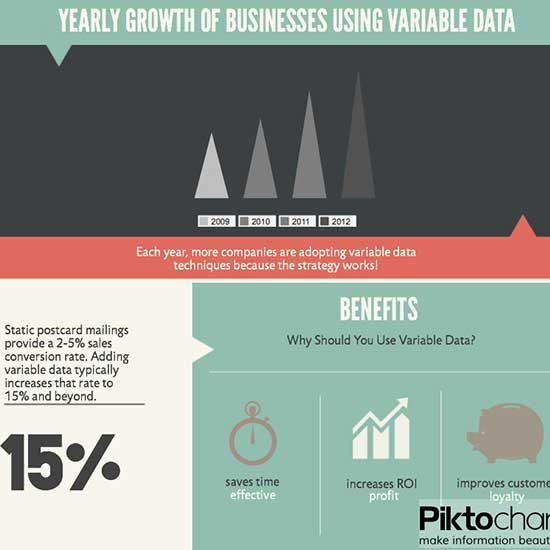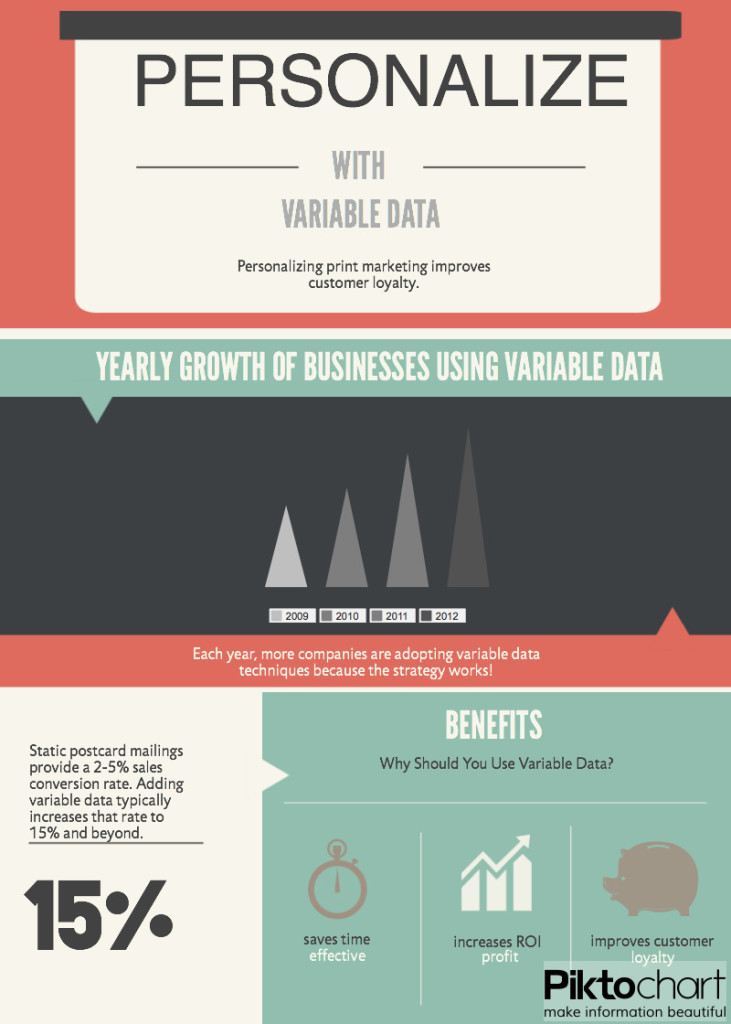
We are happy to announce that we will be rolling out variable data options on some of our print products this month.
What is variable data?
Variable date printing is a form of digital printing where text, graphics and images can be dynamically changed per print by pulling information from a database or external file (such as Microsoft’s Excel). For instance, personalized letters or postcards can have different names and addresses on them. Rather than printing 1,000 pieces of the same artwork, various elements of a static design can be changed based on specific criteria essentially personalizing each individual print. Variable data printing is especially popular for achieving direct-mailings, direct marketing and advertising.
The benefit of variable data
The key benefit of variable data comes from personalization allowing businesses to better connect with consumers. Prospects are more likely to engage with print materials that better reflect their interests. For instance, a company that sells sports equipment may present soccer ball images to soccer players rather than baseballs or basketballs. More simplistic examples of variable data usage includes unique mailing addresses and name changes.
Research proves that a mailed postcard with personalized messages is more likely to be read than a static postcard. By understanding and categorizing customers, the sales conversion and ROI of any print marketing plan can drastically improve. Prospects convert more easily into customers and customer loyalty is greatly strengthened.
The industry accepted conversion rates of sending postcards and other print materials is typically around 2% to 4%. Personalizing messages can increase that response rate to 10% to 15%.

A federal credit union used VDP postcards to drive $1 million in loan activity and achieve an ROI of over 2,700% for the first year of interest income. Source: The Print on Demand Initiative. Wallingford Municipal Credit Union. 2010
Direct mail can be powerful when combined with variable data
85% of consumers sort through and read selected pieces of mail every day.
40% of consumers say that they have tried a new business after receiving direct mail, and 70% have renewed relationships with businesses that they had previously ceased using.
Printkeg does not currently offer direct mail services, but we will be adding that service soon. For now, we offer variable data options on postcards, bookmarks, stationery and cards.
*stats provided by MailPrint
Popular ways of using variable data
1. Mass mailings or direct mailing
2. Numbering for tickets
3. Personalized thank you cards
4. Targeted coupons
5. Customized booklets/newsletters
6. Including a personalized URL (PURL) that provides the prospect with a web landing page full of information tailored to them
7. Personalized QR Codes
There are different degrees of variable data. For now PrintKEG is offering text and image-based variable data services only.
How to send variable data to printers
Customers can send data files in Microsoft Excel format or CSV (Comma Separated Values) format. Each column of data must include a header. I quickly created a spreadsheet example in Google Drive demonstrating how data is to be organized. In most situations, the database or information source will export a CSV file with the proper headers already included.



